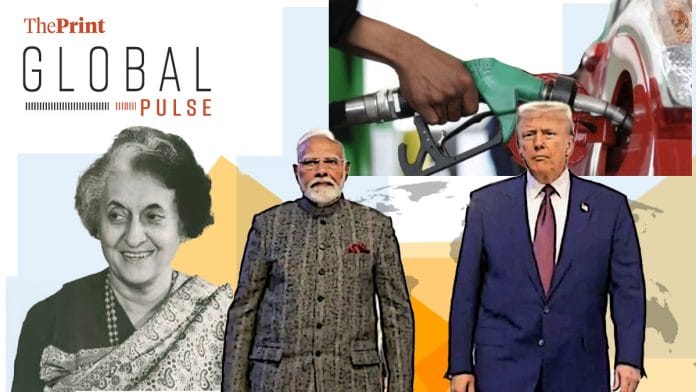New Delhi: Over the last few weeks, the India-US trade partnership has been defined by the fracas caused by US President Donald Trump’s imposition of 50% tariff on Indian goods entering the nation. However, The New York Times reports on what’s being overlooked––the “value that both nations derive from the services part of their total trade, which topped $200 billion last year”.
Shedding light on what binds the US and Indian economies, Alex Travelli says: “Mr Trump has focused on the $46 billion deficit in goods that the US ran with Indian companies in 2024. But over the same period, Indian and American companies bought and sold, in virtually equal amounts, $84 billion worth of services. The two countries have run a nearly equal balance in the exchange of services for several years.”
The report points out that in India’s biggest cities, US-headquartered multinationals are building permanent corporate offices to do work across the world. “Their annual payroll is far greater than the US trade deficit Mr Trump is concerned about. That is money that helps drive India’s economy and benefits companies with deep roots in the US,” it says, adding that “the services traded between the two countries are unusually complementary”.
India’s purchase of discounted Russian crude, after a “brief dip” in July, continues, writes Veena Venugopal in Financial Times, citing reports.
This takes place as Minister of External Affairs S. Jaishankar is in Moscow “urging Russian companies to deepen their engagement with India”, says the report, going on to refer to the tricky geopolitical maze India is currently making its way through.
“For now, India seems to be digging in its heels and pivoting towards China and Russia, to somehow make up the missing numbers from trade with the US. This is a reflection of both the challenges of dealing with Trump’s whimsy as well as the sign of a failed diplomatic strategy by India. (Within India, the government’s stance of not bending to Trump’s wishes is a narrative that has not had as many fans as I thought it would),” she notes.
Venugopal also says that in the “short to medium term, all options are wobbly”, observing that “neither China nor Russia are strong allies for India, even if all three countries face a common problem in Trump”.
Financial Times also carries a review of historian Srinath Raghavan’s latest book Indira Gandhi and the Years that Transformed India.
“In the long 1970s, Indian democracy turned into a terrible beauty: terrible in its unheeding will to power; yet beautiful in its ability to precipitate the passions of millions, especially the poor,” writes Raghavan in the book, which studies the various crises during Indira’s stints as prime minister of India––“the political ferments of the 1960s and the economic shocks of the 1970s”.
“The book challenges several conventional wisdoms. Many observers attribute Gandhi’s political dominance to personal charisma; her ability to defeat political rivals nurtured this wider perception,” says the review by Sanjay Ruparelia, a professor.
“Economic nationalisation reflected Gandhi’s leftist rhetoric and financed new anti-poverty schemes. But stagflation compelled piecemeal deregulation and conservative macroeconomics, revealing her pragmatism. Article 352 of the Constitution authorised Gandhi to declare Emergency rule. Yet she violated many of its provisions, making it a coup d’état,” notes the review.
OpenAI is all set to open offices in New Delhi, establishing “a formal presence in a key growth market”, reports Sankalp Phartiyal in Bloomberg.
“The expansion also underscores OpenAI’s effort to help shape early regulations in a technology that’s rapidly changing. The world’s most populous country is a massive opportunity for global tech companies, but also a market that’s sometimes proven difficult for them to navigate,” says the report.
The Indian government’s move of blending 20% ethanol with petrol (E20) is slicing carbon emissions––but it has also left vehicle owners worried, raising questions around fuel efficiency and food security, reports Abhik Deb in the BBC.
“Many vehicles in India are not E20-compliant, making their owners sceptical about the benefits of the policy,” says the report.
Hormazd Sorabjee, editor of Autocar India magazine, told the BBC that ethanol has a “lower energy density than petrol and is more corrosive”. This results in lower mileage and exposes certain vehicle parts to a greater risk of wear and tear, according to the report.
(Edited by Nida Fatima Siddiqui)






